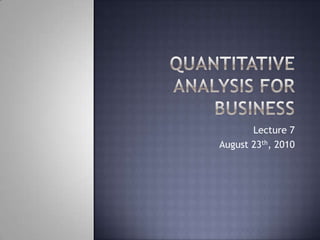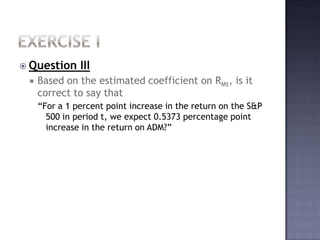The document discusses three exercises from a quantitative analysis lecture. Exercise I introduces a multiple regression model to test the relationship between an asset's returns, market returns, and currency exchange rates. Exercise II examines whether book-to-market ratio and size can explain cross-sectional variation in asset returns using another multiple regression model. Exercise III predicts the decline in stock exchange spreads based on company size, pre-decimalization spreads, and declines in other market spreads.
















